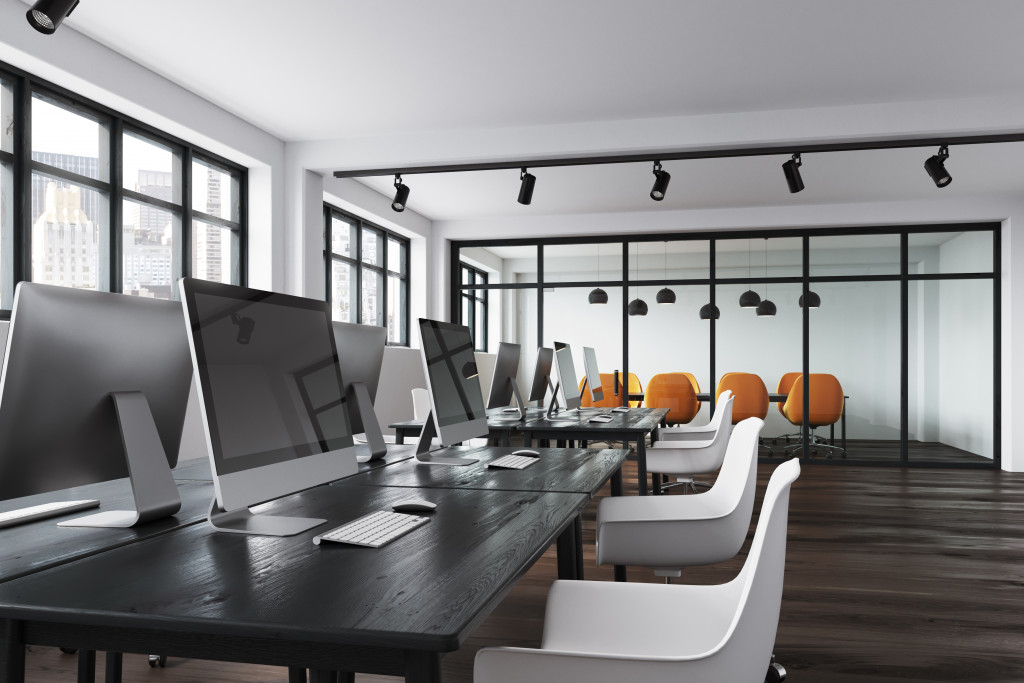It’s a challenging time for workplaces across the globe. The pandemic has forced millions of businesses across the nation to shift to remote work. Since May of this year, however, all fifty states eased their COVID-19 restrictions, with the rules varying from state to state.
While telecommuting is a trend that will likely continue for the years to come, business owners still need to consider adjusting how their workplaces are run in light of the virus, especially if they are still using a skeletal workforce. Here are ways to prepare your place of work and to protect your employees from the virus should they return to the office.
Clean and disinfect the workplace before allowing anyone back.
Consider hiring a cleaning service that can deep clean and disinfect the office before you allow anyone to enter. While it’s highly unlikely the new coronavirus survived in those surfaces during the months the area was unoccupied, doing a general dust-up can be good for your team’s physical and mental well-being. A spotless workspace can protect them from other respiratory ailments like asthma, and a clean and organized work area can help boost morale and productivity.
Abide by your state’s social distancing guidelines.
The nitty-gritty may vary from state to state and from city to city. Still, the Centers for Disease Control and Prevention’s (CDC) recommendations remain: our first line of defense against this virus is keeping our distance. Since the virus is spread mainly from person-to-person through respiratory droplets emitted through talking, coughing, or sneezing, the CDC advises people to keep a distance of six feet from others. In light of this, here are some tips to ensure that your workplace is abiding by social distancing guidelines:
- Set up work stations in a way that allows for proper social distancing (a distance of at least six feet).
- Opt for a skeletal workforce set up so that not everyone is in the office simultaneously.
- If your office’s garage is cramped with parking spaces that are too close to each other, mark individual spaces with a kind of durable thermoplastic paint variant, so your employees know to keep the proper distance between their cars or motorbikes.
Monitor your employees’ health.
Set up a clear policy that any employee who’s experiencing any known COVID-19 symptoms must stay home and quarantine. Even those who are simply feeling under the weather must stay home as their immune system must be compromised, making them more susceptible to the virus. If the employees live with someone who has any of the symptoms, they must also stay home.
Anyone who enters the workplace must have their temperature scanned.

Encourage mask-wearing.
Unfortunately, mask-wearing has become such a polarizing topic in America, and it’s a debate that will most likely go on for the foreseeable future. While no law requires people to wear a mask, the CDC continues to advise people to wear masks, especially in a community setting.
Hang up signs reminding employees to wash their hands, wear masks, and keep their distance.
There’s a reason frequent hand-washing is considered one of our first lines of defense against the coronavirus—soap molecules discompose the fatty coat or layer that surrounds the virus, rendering it unable to function. Washing their hands with soap and water should be the first thing your employees are reminded of when they step into the office.
When people get together, it’s hard not to fall back into old habits. The signs will remind your employees that we’re living a new normal and that the virus is still a real threat. Do everything in your power to remind them to keep their masks on and to not get too close while working.
Provide alcohol-based sanitizers in key areas of the workplace.
Studies show that we touch our faces sixteen times an hour. One way the virus is transmitted is through touching an infected surface and then touching our eyes, nose, and mouth. One way to combat this is by placing alcohol-based sanitizers in the office’s waiting area, reception table, pantry, cafeteria, and other common areas. Use sanitizers or gels with at least 75% alcohol content.
Prioritize Their Physical and Mental Health
Keep your communication lines open and encourage your employees to be honest about how they feel towards going back to the office. Let them express themselves and assure them that you are doing everything you can in your power to protect them from the virus. The steps you take to make the workplace a safe and clean space is not just for your team’s physical health; it’s for their mental health, too.

